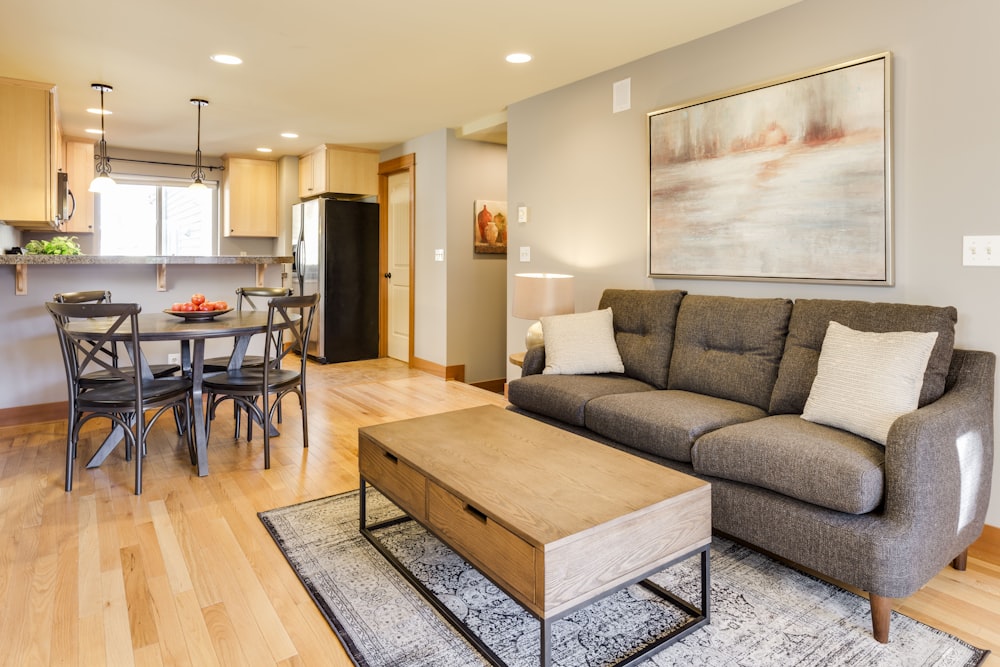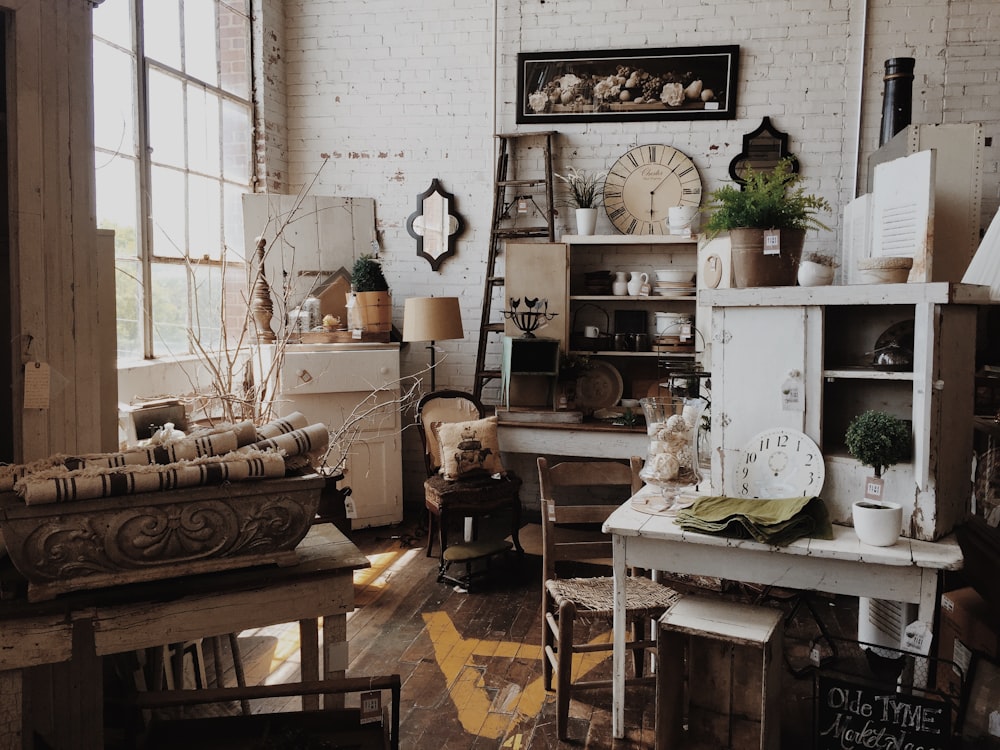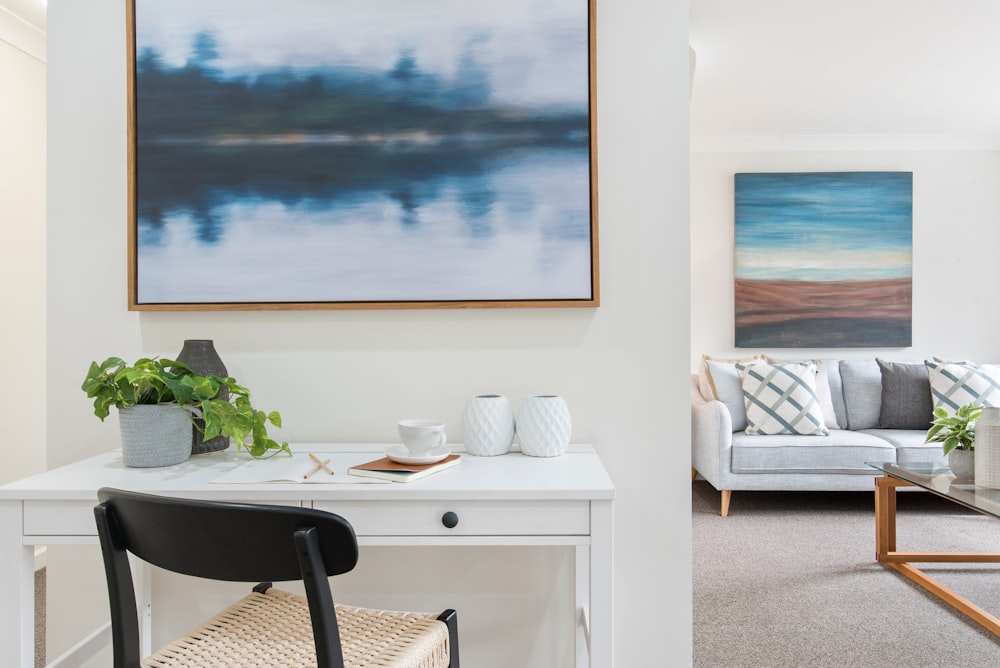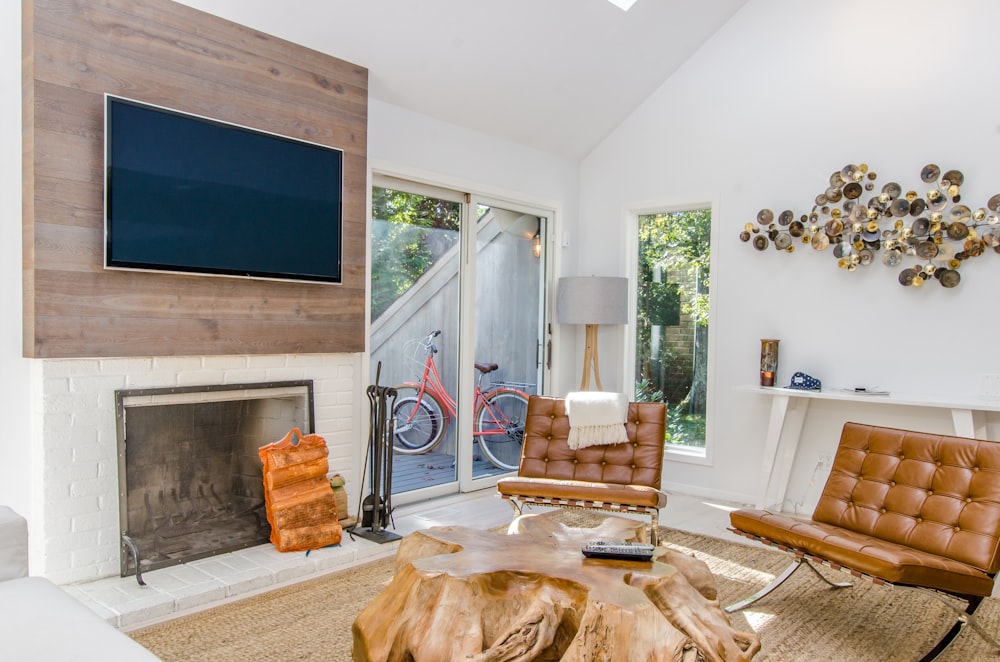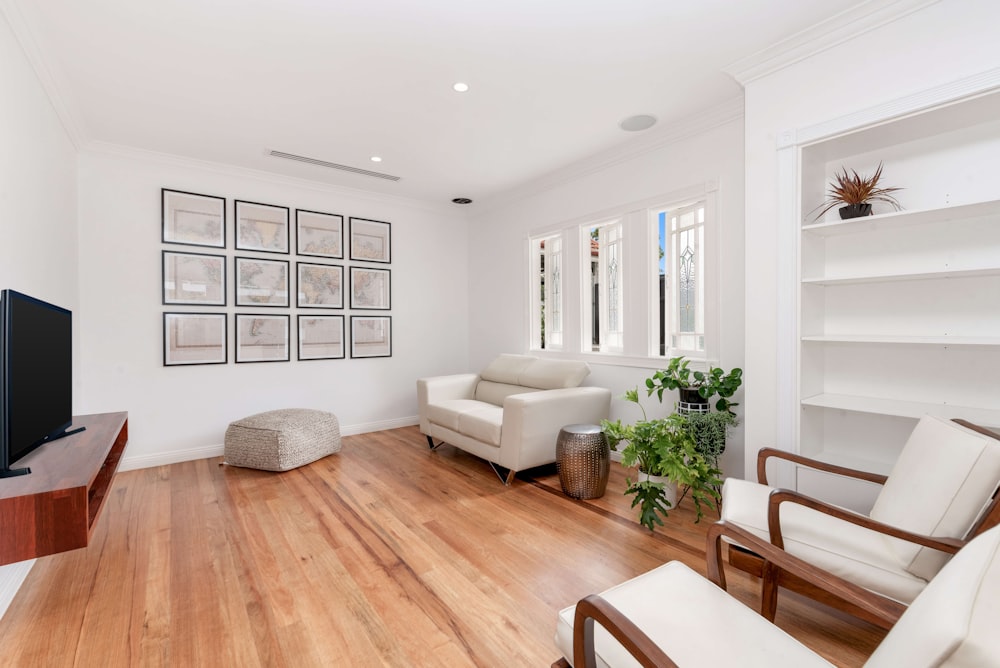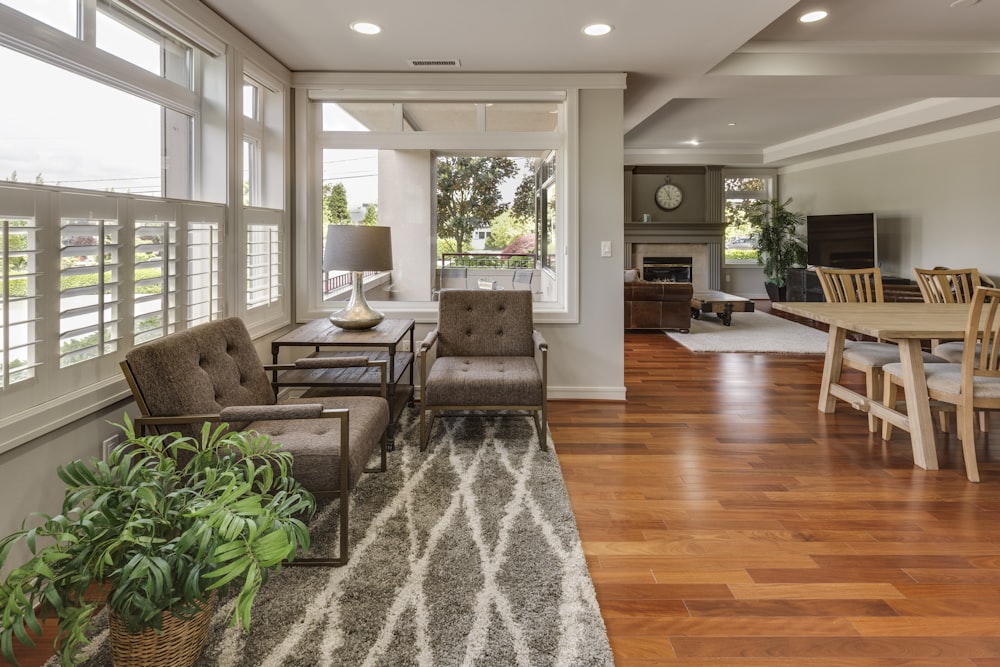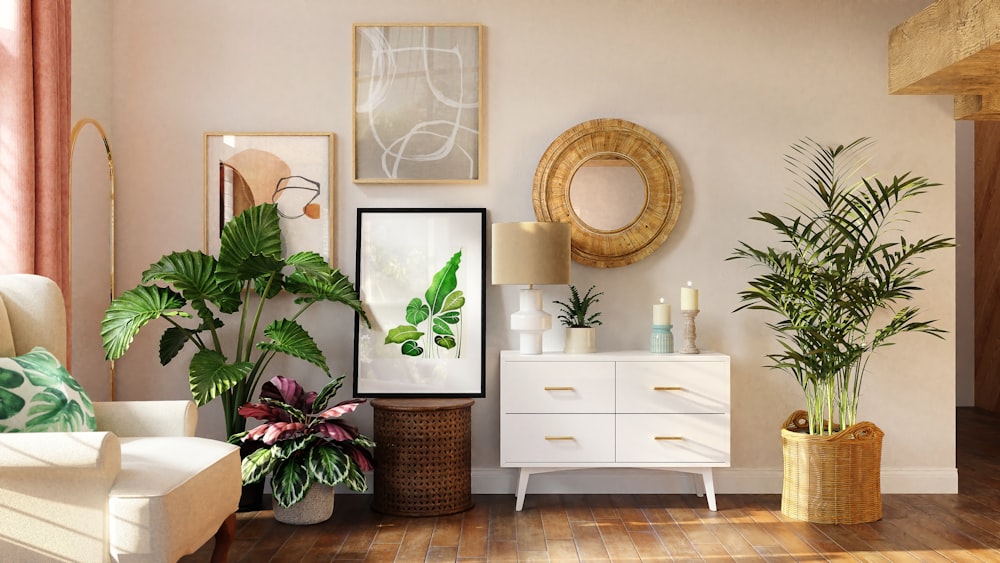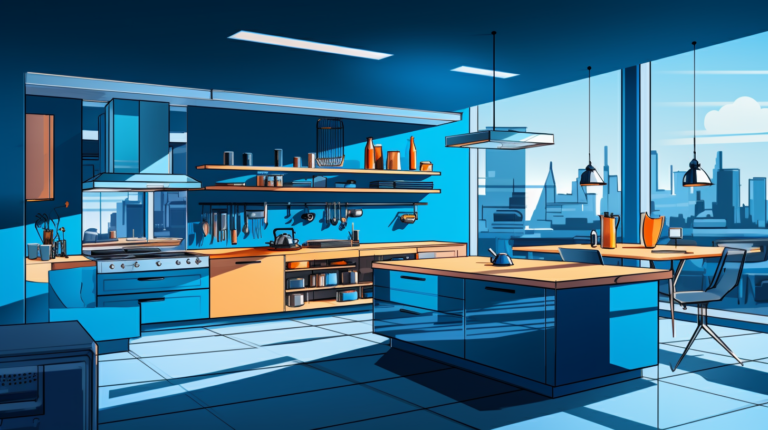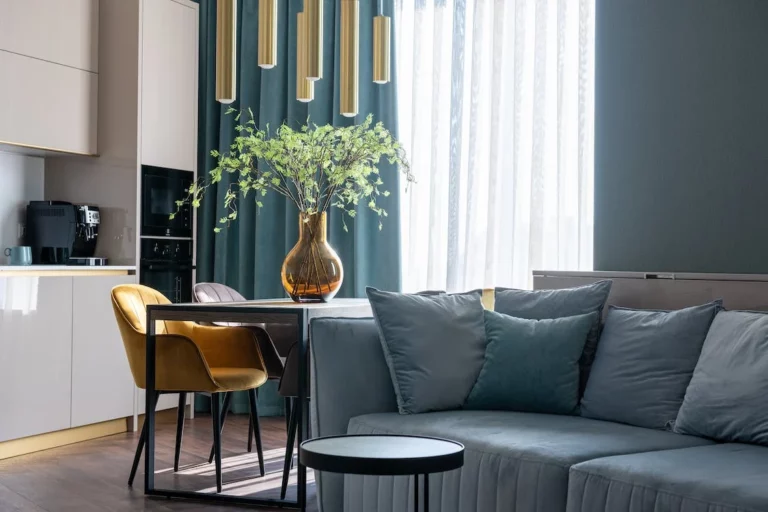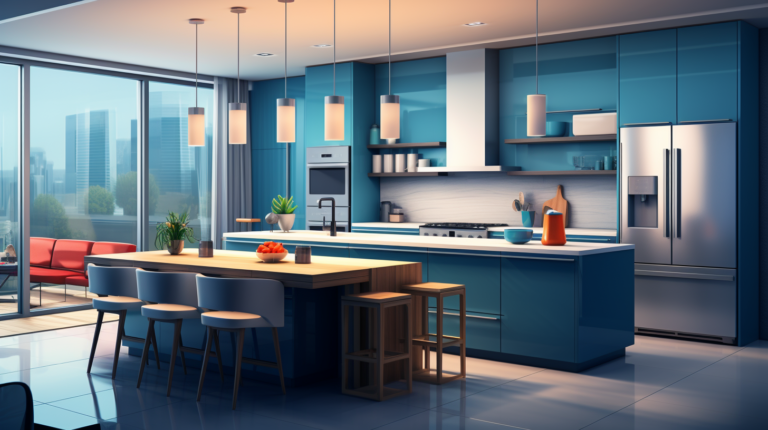The Art of Small Space Decoration : Tips for Homeowners in 2023
Welcome to the world of small space decoration! When it comes to decorating a small home or apartment, it can be a challenge to make the most of every inch without feeling cramped or cluttered. But fear not, because with a few clever tips and tricks, you can transform your compact living space into a stylish and functional oasis.
Table of Contents
- 1 The Art of Small Space Decoration
- 2 Understanding the Challenges of Small Space Decoration
- 3 Maximizing Storage in Small Spaces
- 4 Strategic Use of Color and Lighting
- 5 Furniture and Layout Considerations
- 6 Creating the Illusion of Space
- 7 Incorporating Practical and Aesthetic Elements
- 8 Small Space Gardening and Indoor Plants
- 9 Personalization and Expressing Your Style
- 10 Conclusion
- 11 Frequently Asked Questions
The Art of Small Space Decoration
In this article, we will explore the art of small space decoration and provide you with valuable insights and expert advice on how to maximize your space while still expressing your personal style. Whether you are a homeowner or a renter, these tips can be easily applied to any small space.
So, get ready to unleash your creativity and discover the possibilities of small space decoration. From utilizing vertical space to choosing the right furniture and incorporating practical elements, we’ve got you covered. Let’s dive in and turn your cozy space into a place you’ll love coming home to!
“Decorating a small space is all about innovation and finding creative solutions to make the most of limited square footage.”
Understanding the Challenges of Small Space Decoration
Decorating small spaces can be a fun and rewarding challenge. Whether you’re working with a tiny apartment or a compact room, there are several unique considerations to keep in mind. Understanding the challenges of small space decoration is key to making the most of your limited square footage. In this section, we’ll explore the importance of utilizing every inch, creating illusions of space, and choosing the right furniture for your small space.
Importance of Utilizing Every Inch
When you have limited space, it’s crucial to make use of every available inch. Here are some tips to maximize your space:
- Vertical storage: Look for opportunities to utilize vertical storage solutions such as wall-mounted shelves, hanging organizers, or tall bookcases. This not only frees up valuable floor space but also adds visual interest to your small space.
- Under-bed storage: Invest in beds with built-in storage or use under-bed storage containers to make the most of the space beneath your bed. This is a great way to store out-of-season clothing, extra bedding, or bulky items.
- Multifunctional furniture: Opt for furniture pieces that serve multiple purposes, such as ottomans with hidden storage or coffee tables with built-in shelves or drawers. These dual-purpose items help you maximize storage while minimizing clutter.
Creating Illusions of Space
Even if your small space doesn’t physically expand, you can create the illusion of a larger area. Here’s how:
- Light and neutral colors: Light and neutral colors like whites, creams, and pastels can make a small space appear larger and more open. These colors reflect light, creating an airy and spacious feel.
- Playing with patterns and textures: Incorporate patterns and textures strategically to add depth and visual interest. Use patterns sparingly and opt for lighter or smaller-scale designs to prevent your space from feeling cramped.
- Optimizing natural and artificial lighting: Good lighting is a game-changer for small spaces. Maximize natural light by using sheer curtains or blinds that allow light to penetrate. Additionally, consider adding well-placed mirrors and using artificial lighting to brighten up dark corners.
Choosing the Right Furniture
Selecting the right furniture is crucial when decorating a small space. Here are some considerations:
- Scale and proportion: Choose furniture that is proportional to your space. Oversized furniture can overpower a small room, making it feel even more cramped. Opt for sleek and streamlined pieces that fit comfortably within the room’s dimensions.
- Furniture with built-in storage: Look for furniture pieces that offer additional storage options. For example, a bed with drawers underneath or a sofa with hidden compartments can help you keep your small space neat and organized.
- Flexible and lightweight furniture: Consider furniture that can be easily moved or rearranged to accommodate different needs. Lightweight chairs, folding tables, and modular furniture can be adjusted to suit various activities, making your small space more versatile.
By understanding the challenges of small space decoration and applying these tips, you can transform your cramped quarters into a stylish and functional living area. Remember, it’s all about maximizing storage, creating illusions of space, and choosing the right furniture to make the most of your limited square footage.
Maximizing Storage in Small Spaces
When it comes to decorating small spaces, one of the biggest challenges is finding enough storage. Limited square footage means limited room for closets and cabinets. However, with some clever strategies, you can maximize storage in small spaces and create a clutter-free environment. In this section, we’ll explore some tips and ideas for maximizing storage in small spaces.
Utilizing Vertical Space
One of the best ways to maximize storage in small spaces is to utilize vertical space. Instead of relying solely on floor space, look up and make use of your walls. Here are some ideas:
- Install shelves or floating wall-mounted storage units. These can be used for displaying decorative items as well as storing everyday items like books, baskets, and small accessories.
- Hang hooks on the walls or behind doors to hang coats, bags, and other items that would otherwise take up valuable floor space.
- Use over-the-door organizers for shoes, toiletries, or accessories. These organizers are great because they don’t require drilling into walls and can easily be removed or repositioned if needed.
Creative Storage Solutions
In small spaces, it’s crucial to get creative with your storage solutions. Here are some clever ideas to make the most of every inch:
- Choose furniture with built-in storage. For example, opt for a bed with drawers underneath, a storage ottoman that can hold blankets or pillows, or a coffee table with hidden compartments.
- Use under-bed storage containers to store out-of-season clothes, extra bedding, or other items that are not used frequently.
- Look for furniture pieces that have multiple purposes. For instance, a sofa that can be converted into a bed or a dining table with foldable sides that can be tucked away when not in use.
Smart Organization Systems
Keeping your small space organized is key to maximizing storage. Here are some smart organization systems to consider:
- Invest in modular storage systems that can be customized to fit your specific needs. These systems typically come with shelves, drawers, and other components that can be arranged in different configurations.
- Use drawer dividers and organizers to keep small items like socks, jewelry, or office supplies neatly separated and easily accessible.
- Label your storage containers to make it easier to find things and maintain order. Clear plastic bins or boxes are especially useful for easily identifying contents without having to open each one.
Remember, the key to maximizing storage in small spaces is to think vertically, be creative with your solutions, and keep everything well-organized. By implementing these strategies, you can create a functional and clutter-free environment, even in the smallest of spaces.
Strategic Use of Color and Lighting
When it comes to decorating small spaces, one of the most powerful tools you have at your disposal is the strategic use of color and lighting. These two elements can completely transform the look and feel of a room, creating an illusion of space and adding depth and character. Let’s delve into some tips and tricks for making the most of color and lighting in small spaces.
Choosing Light and Neutral Colors
One of the easiest ways to make a small space feel bigger is by using light and neutral colors on the walls and furniture. Light colors such as whites, creams, and pastels reflect more light and make a room feel brighter and more spacious. They create an open and airy atmosphere that visually expands the space.
Neutral colors like grays, beiges, and taupes are also great options for small spaces. They are versatile and timeless, creating a calm and sophisticated backdrop for other design elements. By using light and neutral colors as a base, you can easily switch up the look of your space by adding pops of color with accessories or artwork.
Playing with Patterns and Textures
While light and neutral colors are ideal for creating a sense of space, that doesn’t mean you have to sacrifice visual interest. Incorporating patterns and textures into your small space can add depth and visual appeal. Consider adding a textured rug or throw pillows in different fabrics to create a tactile experience. Geometric patterns and textured wallpaper can also bring a sense of movement and dimension to the room.
Optimizing Natural and Artificial Lighting
Lighting can greatly impact the overall ambiance of a small space. Both natural and artificial lighting play a crucial role in creating an illusion of space and making the room feel larger. Here are a few tips for optimizing lighting in your small space:
- Maximize natural light: Keep curtains or blinds open during the day to let in as much natural light as possible. If privacy is a concern, consider using sheer curtains or frosted window films to allow light in while still maintaining privacy.
- Layer artificial lighting: Instead of relying on a single light source, utilize multiple light fixtures to create layers of light. Use a combination of overhead lighting, task lighting, and accent lighting to add depth and create different moods in the room.
- Use mirrors strategically: Mirrors are excellent for reflecting light and creating the illusion of space. Place a large mirror opposite a window to maximize the amount of natural light that enters the room. You can also use mirrors as decorative pieces to add a touch of elegance and make the space appear larger.
Remember, the key to successful small space decoration is to balance functionality with aesthetics. By strategically using color and lighting, you can create a visually appealing and comfortable space that feels larger than it actually is.
Furniture and Layout Considerations
When it comes to small space decoration, choosing the right furniture and arranging it strategically can make a world of difference. Here are some key considerations to keep in mind:
Choosing Multi-functional Furniture
One of the most effective ways to maximize space in a small room is to opt for multi-functional furniture. These pieces are designed to serve more than one purpose, saving you both space and money. Some examples of multi-functional furniture include:
- Sofa beds: A sofa during the day and a bed at night, perfect for accommodating guests.
- Storage ottomans: Not only do they provide a place to sit, but they also offer hidden storage inside.
- Fold-out desks: Ideal for small home offices or study areas, these desks can be folded up when not in use.
- Nesting tables: These space-saving tables can be stacked together when not needed, and easily separated for additional surface area.
Optimizing Furniture Placement
In a small space, every inch counts. To make the most of your room’s layout, consider the following tips:
- Float furniture: Instead of pushing all your furniture against the walls, try floating some pieces in the center of the room. This can create a more open and spacious feel.
- Use rugs to define areas: Rugs can act as visual markers, separating different functional areas within a room. This can help create a sense of organization and flow.
- Consider scale: Choose furniture that fits the scale of your room. Oversized furniture can overwhelm a small space and make it feel cramped, while furniture that is too small can make the room feel empty and disjointed.
Creating Visual Flow
When arranging furniture in a small space, it’s important to create a sense of flow and continuity. Here are a few tips to achieve this:
- Clear pathways: Make sure there is enough space to move around comfortably. Avoid blocking doorways or creating obstacles that make it difficult to navigate the room.
- Arrange furniture with purpose: Think about how you want the room to function and arrange the furniture accordingly. For example, if you enjoy entertaining, arrange seating in a way that encourages conversation and interaction.
- Consider sight lines: Arrange furniture in a way that allows for clear sight lines, so the room feels more open and connected.
Remember, the key is to make the most of the available space without sacrificing functionality or style. With thoughtful furniture selection and strategic placement, you can create a small space that feels both spacious and inviting.
Also Read: Decorating with Plants : Bring Nature into Your Home in 2023
Creating the Illusion of Space
When it comes to decorating small spaces, creating the illusion of space is key. By using clever design techniques, you can visually expand your small space and make it feel more open and airy. Let’s explore some effective strategies for creating the illusion of space in your home.
Mirrors and Reflective Surfaces
One of the easiest and most effective ways to create the illusion of space is by using mirrors. Mirrors reflect light and can make a room appear larger than it actually is. Here are some tips for using mirrors to enhance the sense of space in your small room:
- Strategically place large mirrors: Hang a large mirror on a wall opposite a window to reflect natural light and make the room look brighter and more spacious.
- Use mirrored furniture: Incorporate furniture with mirrored surfaces, such as a mirrored coffee table or a mirrored wardrobe, to reflect light and create the illusion of depth.
- Consider a mirrored backsplash: In a small kitchen, a mirrored backsplash can visually extend the space by reflecting the walls and countertops.
Optical Illusions
Another technique for creating the illusion of space is by using optical illusions. These tricks play with our perception and make a room appear larger than it actually is. Here are a few ideas to consider:
- Vertical stripes: Paint vertical stripes on an accent wall or use striped wallpaper to draw the eye upward, giving the impression of higher ceilings and a taller room.
- Floor-to-ceiling curtains: Hang curtains from ceiling to floor to create the illusion of taller windows and a higher ceiling.
- Hang artwork at eye level: By hanging artwork at eye level, you draw attention to the vertical space in the room and make it feel more expansive.
Minimizing Clutter
Clutter can make a small space feel even smaller and more cramped. To create the illusion of space, it’s important to minimize clutter and keep your small space organized. Here are some tips for keeping your space clutter-free:
- Maximize storage: Invest in furniture pieces with hidden storage compartments, such as ottomans or coffee tables with built-in storage. This allows you to keep your belongings out of sight and maintain a clean and tidy space.
- Utilize vertical storage: Take advantage of vertical space by installing shelves or using hanging storage solutions. This helps free up floor space and gives the illusion of a larger room.
- Declutter regularly: Regularly go through your belongings and get rid of items you no longer need or use. A clutter-free space will instantly make your small room feel more spacious.
By using mirrors, optical illusions, and minimizing clutter, you can create the illusion of space in your small home. Remember to experiment with different design elements and have fun with the process. With a little creativity, your small space can feel open and inviting, no matter the square footage.
Incorporating Practical and Aesthetic Elements
When it comes to decorating small spaces, it’s important to consider both functionality and aesthetic appeal. It’s not just about making the space look good, but also ensuring that it serves a practical purpose. Here are some tips for incorporating practical and aesthetic elements into your small space:
Multipurpose Pieces
One of the best ways to make the most of a small space is by using furniture and decor pieces that serve multiple purposes. This helps you maximize the functionality of the space without taking up extra room. For example:
- Sofa beds: Instead of having a separate bed for guests, consider investing in a sofa bed that can serve as seating during the day and a sleeping area at night.
- Storage ottomans: These are great for providing extra seating while also offering storage space for blankets, pillows, or other items that you want to keep handy.
- Foldable tables: Look for tables that can be folded and stored away when not in use. This can save a significant amount of space in smaller dining areas or home offices.
Invisible Storage Solutions
Another way to incorporate practical elements into your small space is by utilizing invisible storage solutions. These are clever ways to hide clutter and keep your space organized. Some ideas include:
- Under-bed storage: Invest in bed frames that have built-in drawers or use under-bed storage boxes to make the most of that unused space.
- Floating shelves: These shelves take up minimal space and provide an opportunity to display decorative items or store frequently used items.
- Hidden cabinets: Install cabinets with doors that blend seamlessly into the wall or disguise them as mirrors for a sleek and organized look.
Art and Decor
Decorative elements can play a dual role in small spaces by not only adding aesthetic appeal but also serving a practical purpose. Here are some examples:
- Mirrors: Mirrors are a great way to create the illusion of space and reflect light, making a small room feel bigger and brighter.
- Wall hooks and organizers: Install hooks and organizers on walls to hang coats, bags, and other accessories. This frees up floor space and keeps things organized.
- Vertical artwork: Instead of using horizontal artwork, opt for vertical pieces to draw the eye upward and create a sense of height in the room.
Remember, when incorporating practical and aesthetic elements into your small space, it’s important to strike a balance. Don’t overcrowd the space with too many items, as this can make it feel cluttered and smaller. Choose pieces that serve a purpose and align with your personal style. With some thoughtful planning and creativity, you can create a small space that not only looks great but also functions efficiently.
Small Space Gardening and Indoor Plants
If you’re a homeowner with limited space, you might think that gardening is out of the question. But fear not! Small space gardening is not only possible, but it can also bring life and beauty to your home. Whether you have a tiny apartment balcony, a small patio, or just a few windowsills, there are plenty of creative ways to incorporate plants into your space. In this section, we’ll explore the art of small space gardening and how to choose the right indoor plants for your home.
Vertical Gardens and Hanging Plants
One of the best ways to maximize space in a small area is by utilizing vertical space. Vertical gardens and hanging plants are excellent options for bringing greenery into your home without taking up valuable floor space. Here are a few ideas to get you started:
- Wall-mounted planters: Install vertical planters on your walls or fences to create a stunning living wall. You can choose from a variety of planters made from metal, wood, or even fabric.
- Hanging planters: Hang plants from the ceiling or mount them on hooks attached to your walls. You can use macramé plant hangers or metal brackets for a stylish and functional look.
- Window boxes: If you have windowsills, consider installing window boxes to create a mini garden. Window boxes are perfect for growing herbs, flowers, or small vegetables.
Choosing Suitable Indoor Plants
When it comes to choosing indoor plants for small spaces, there are a few factors to consider. Here are some tips to help you pick the right plants:
- Size: Opt for compact plants that don’t grow too tall or wide. Look for varieties that are known for their compact growth habits, such as dwarf or miniature varieties.
- Light requirements: Assess the amount of natural light your space receives. Choose plants that thrive in low-light conditions if your home doesn’t get much sunlight. If you have a sunny spot, go for plants that love bright, indirect light.
- Maintenance: Consider your time and commitment level when selecting plants. If you’re a busy homeowner, opt for low-maintenance plants that don’t require frequent watering or pruning.
Clever Plant Arrangements
Arranging your indoor plants strategically can help maximize space and create visual interest. Here are some clever ideas for small space plant arrangements:
- Tiered plant stands: Invest in tiered plant stands to create a vertical display. This allows you to showcase multiple plants without taking up too much floor space.
- Window shelves: Install shelves near windows to create a mini greenhouse effect. Place plants on the shelves, allowing them to receive ample sunlight.
- Floating shelves: Install floating shelves on walls to display your plant collection. This not only adds greenery to your space but also acts as a decorative feature.
Remember, creating a small space garden is all about creativity and utilizing every inch of your space wisely. With the right plants and thoughtful arrangements, you can bring nature indoors and create a serene and inviting atmosphere in your home.
Pro Tip: Don’t forget to water your indoor plants regularly and provide them with the necessary nutrients. Consider using a moisture meter to gauge when your plants need watering. Also, be mindful of the humidity levels in your home, especially if you’re growing tropical plants.
Personalization and Expressing Your Style
When it comes to small space decoration, one important aspect is personalization and expressing your unique style. Your home should be a reflection of who you are, even in a limited space. Here are some tips on how to add a personal touch and make your small space truly your own:
Adding Personal Touches
- Display sentimental items: Whether it’s photographs, artwork, or souvenirs from your travels, incorporating these personal items into your small space can add a sense of warmth and personality.
- Showcase hobbies and interests: If you have a collection of books, records, or sports memorabilia, find creative ways to display them, such as using floating shelves or wall-mounted racks. This not only adds a personal touch but also allows you to maximize your storage space.
- DIY projects: Get creative and add DIY elements to your small space. You can create your own artwork, make custom throw pillows, or even repurpose old furniture with a fresh coat of paint. These small DIY touches can make a big impact on the overall look and feel of your space.
Customizing Storage Solutions
- Invest in modular storage: Look for customizable storage solutions that can be tailored to your specific needs. Modular storage units, such as cube shelves or adjustable organizers, allow you to create a system that works best for your small space.
- Utilize under-bed storage: Maximize the space under your bed by using storage bins or vacuum-sealed bags to store items that you don’t need on a daily basis, such as seasonal clothing or extra bedding.
- Hang hooks and organizers: Install hooks and organizers on the back of doors or walls to keep everyday items within easy reach. This can be a practical and stylish way to store keys, bags, or even jewelry.
Mixing and Matching Decor
- Experiment with different textures: Mixing textures can add depth and interest to your small space. Combine smooth and rough textures, such as a plush rug with a reclaimed wood coffee table, or a velvet accent chair with a metal side table.
- Layering patterns: Don’t be afraid to have fun with patterns. Mix and match different patterns, such as stripes, florals, or geometric designs, to create a visual focal point or add dimension to your small space.
- Combine old and new: Incorporate vintage or antique pieces into your small space to add character and charm. Mixing old and new elements can create a unique and eclectic style that is all your own.
Remember, personalization is about making your small space feel like home. It’s about creating a space that reflects your personality and brings you joy. Don’t be afraid to think outside the box and get creative with your decor choices. By adding personal touches, customizing storage solutions, and mixing and matching decor, you can transform your small space into a cozy and stylish haven that is uniquely yours.
Also Read: The Art of Home Decoration : Tips and Tricks for Homeowners in 2023
Conclusion
In conclusion, small space decoration can be a fun and challenging task for homeowners. By understanding the challenges and implementing the right strategies, you can transform your compact living areas into stylish and functional spaces. Remember to utilize every inch of space, choose the right furniture, and maximize storage options to keep your small space organized and clutter-free.
Strategic use of color and lighting can also make a significant impact in creating the illusion of space and adding visual interest. Additionally, considering furniture and layout options that optimize space and create a cohesive flow can help maximize functionality.
Incorporating practical and aesthetic elements, such as multipurpose furniture and invisible storage solutions, allows you to make the most of your small space without compromising on style. Lastly, don’t forget to personalize your space and express your unique style through personal touches and mix-and-match decor.
At Arkitecture Today, we aim to inspire homeowners with fresh ideas and tips for home decoration and interior design. Check out our website for more articles on small space decoration, kitchen and bathroom design, and other home improvement topics. Remember, even with limited square footage, your small space can still be a haven of style and functionality!
Click here to visit our website and explore more home decoration ideas and inspiration!
Frequently Asked Questions
- What are some tips for decorating small spaces?Some tips for decorating small spaces include: 1. Use light colors to create an illusion of space, 2. Utilize multi-functional furniture, 3. Opt for smaller furniture pieces, 4. Use mirrors to create the illusion of depth, and 5. Maximize storage with smart organization solutions.
- How can I make my small space appear larger?To make your small space appear larger, you can: 1. Use mirrors strategically, 2. Choose furniture that is proportionate to the space, 3. Opt for light and neutral colors on walls and furniture, 4. Keep the space clutter-free, and 5. Utilize natural light as much as possible.
- What types of furniture work best in small spaces?When it comes to furniture for small spaces, it’s best to choose pieces that are multi-functional and space-saving. Examples include sofa beds, nesting tables, foldable chairs, and ottomans with hidden storage.
- How can I maximize storage in a small space?To maximize storage in a small space, you can: 1. Utilize vertical space with floating shelves or wall-mounted cabinets, 2. Use furniture with built-in storage, 3. Opt for storage containers that can fit under beds or in closets, 4. Declutter regularly to make the most of available space, and 5. Use organizers and dividers to keep items tidy.
- Is it possible to create a stylish small space?Absolutely! With careful planning and the right design choices, you can create a stylish small space. Use a cohesive color scheme, add decorative accents, incorporate texture and patterns, and choose furniture and decor that reflect your personal style while being functional.



